|
Special
Reports/Water Crisis |
|
Water Wars:
Pakistani Provinces Clash Over Mega Dam
Pakistan's southern province of Sindh has become a rallying
point for protests and hunger strikes against two huge water
projects, which activists claim will benefit only the eastern
province of Punjab and deny other states their share.
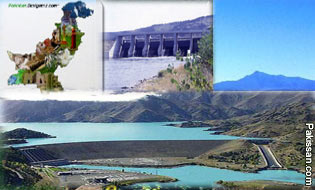 Last week, 11 members of the Jiye Sindh Qaumi Mahaz (JSQM)
began a fast till death in Karachi, the capital of the
province, demanding that the government abandon the Kalabagh
dam and the Greater Thal Canal projects Last week, 11 members of the Jiye Sindh Qaumi Mahaz (JSQM)
began a fast till death in Karachi, the capital of the
province, demanding that the government abandon the Kalabagh
dam and the Greater Thal Canal projects
JSQM chairman Bashir Qureshi claims his movement has the
backing of the 40 million people of Sindh. "The Sindh
assembly, all political, religious and nationalist parties --
irrespective of ideology -- have given the thumbs-down to the
controversial water projects," says Qureshi.
Says Qadir Magsi, chief of the Sindh Taraqi Passand Party,
"World powers exaggerate the issue of weapons of mass
destruction. But the Kalabagh dam will kill 40 million people
of Sindh, 30 million of the NWFP and 15 million of
Balochistan."
Calling Pakistani President Pervez Musharraf an enemy of
Pakistan, the provincial president of Benazir Bhutto's
Pakistan People's Party, Nisar Khuhro, says his party will not
sit idle when the interests of Pakistan are threatened.
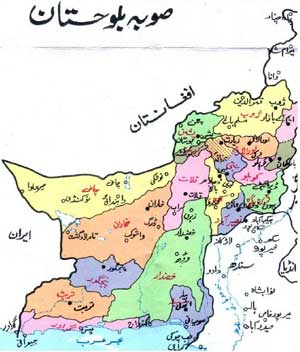 At the center of the controversy is the Kalabagh dam, to be
located on the Indus river, 100 miles southwest of Islamabad.
It was conceived by the government in 1953 and a project
report in 1984 tried to establish the technical and economic
feasibility of the project. The Water and Power Development
Authority's latest brief on the project says, "It is expected
to be a 260-foot high structure that will create a 6.1 million
acre feet (MAF) reservoir of usable storage." At the center of the controversy is the Kalabagh dam, to be
located on the Indus river, 100 miles southwest of Islamabad.
It was conceived by the government in 1953 and a project
report in 1984 tried to establish the technical and economic
feasibility of the project. The Water and Power Development
Authority's latest brief on the project says, "It is expected
to be a 260-foot high structure that will create a 6.1 million
acre feet (MAF) reservoir of usable storage."
The project will also generate 2,400 MW of power and this may
later be increased to 3,600 MW, making Kalabagh one of the
largest hydroelectric dams in Asia. The total cost of the
civil and power facilities is estimated at US $5 billion.
The second project is the Greater Thal Canal, which, along
with its branches, will be 1,221 miles long. The project is
estimated to cost US $610 million and will be completed in
seven years, providing irrigation facilities to 1.9 million
acres in Punjab province.
Opposition from Sindh and the Northwest Frontier Province
(NWFP) to both projects is strong because people cutting
across the political spectrum believe that Punjab wants to hog
the lion's share of Pakistan's river water.
Last month, at a meeting of the political committee, which has
to make recommendations on new dams by June 2004, differences
among the four provinces spilled into the open.
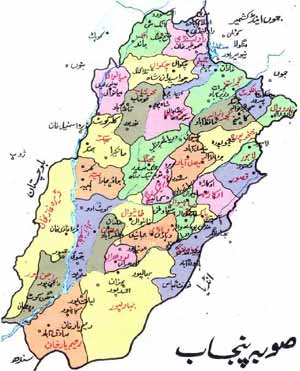 While Sindh, NWFP and the western province of Balochistan
called for removing mistrust, Punjab wanted everyone to get
cracking. While Sindh, NWFP and the western province of Balochistan
called for removing mistrust, Punjab wanted everyone to get
cracking.
Sindh representative Syed Qamaruzzaman Shah rejects the
construction of the Kalabagh dam, saying that Sindhis could
not trust anybody because of past experiences. "The Water
Accord 1991 is not being implemented and Sindh has not yet
been provided money announced for the rehabilitation of its
irrigation system," he says.
Shah also questions why the authorities won't make public the
design of the Kalabagh dam, if it is really a storage
reservoir as claimed.
Sharreff Nisar Leghari, a member of the Sindh provincial
assembly, also says no to the dam. "Sindhis are not ready to
allow new dams because of the climate of mistrust, and they
demand new storage sites in Sindh province instead of in
Punjab," he says.
Sardar Muhammad Khan, a member of the Balochistan assembly,
issues a darker threat. "The federating units cannot co-exist
till equality prevails," he says.
But Sindh Minister for Inter-Provincial Coordination, Nadir
Akmal Khan Leghari, says that rumors regarding the starting of
construction work of the Kalabagh dam are part of the
opposition's disinformation drive.
He explains that before initiating the construction of the
dam, the consensus of all the four provinces, especially
Sindh, will be sought and their apprehensions removed.
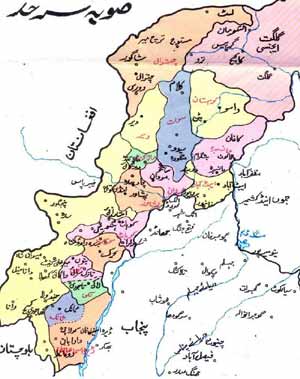 Leghari denies that Punjab is involved in siphoning water.
According to him, the construction of new reservoirs is
necessary to overcome the water shortage. He says his ministry
has focused on solving the problems faced by Sindh and in this
regard, the paper work has been completed, while talks are
under way with Punjab and Balochistan. Leghari denies that Punjab is involved in siphoning water.
According to him, the construction of new reservoirs is
necessary to overcome the water shortage. He says his ministry
has focused on solving the problems faced by Sindh and in this
regard, the paper work has been completed, while talks are
under way with Punjab and Balochistan.
But water expert Amjad Hussain asserts that the human and
material costs of the Kalabagh dam far outweigh its benefits
and will only ensure the penury of future generations.
"For a fraction of the money earmarked for Kalabagh, 105,000
water courses in Pakistan could be lined and farmers trained
to level farms and manage water," Hussain maintains. He says
this will reclaim at least 10-12 MAF of water, almost double
the storage capacity of Kalabagh, and significantly reduce
waterlogging and soil degradation.
Environmentalist Muhmmad Tanveer says that large dams have
already played havoc with marine life and depleted wetlands in
the Indus delta, spread over 300 square kilometers.
Because of impediments upstream, the area covered by mangrove
forests has reduced from 3 million hectares to 100,000
hectares. Riverine forests on the banks of the Indus also face
extinction, warns Tanveer.
Another ecological nightmare is the gradual ingress of the
sea. Some 1.2 million acres of agricultural land have so far
been devoured by the sea, threatening the livelihood of
400,000 fishermen and their dependents residing along the
100-km Sindh coastline.
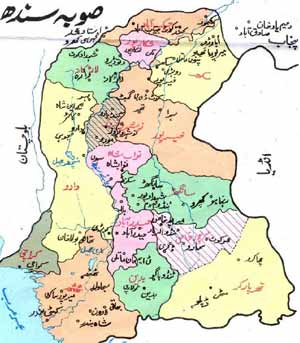 Irrigation expert and political leader Mubashir Hasan fears a
political disaster if Pakistan presses ahead with the Kalabagh
dam and Greater Thal Canal. "The project should not be
launched, no matter how useful or beneficial it is for the
proponents, as other provinces don't like it at all," he
argues. Irrigation expert and political leader Mubashir Hasan fears a
political disaster if Pakistan presses ahead with the Kalabagh
dam and Greater Thal Canal. "The project should not be
launched, no matter how useful or beneficial it is for the
proponents, as other provinces don't like it at all," he
argues.
In his opinion, the technical case for building a dam is not
weak. "But it would be virtual suicide if it is not backed by
political consensus. Let the provinces have political and
administrative autonomy and they will approve not one but many
dams," he says.
Hasan believes there should be more openness to remove all
misgivings. He says Pakistan should make public the design of
the dam, along with the cost estimates.
But then, transparency has never been this government's strong
point.
Curtesy:
OneWorld.net
|
Pakissan.com;
|